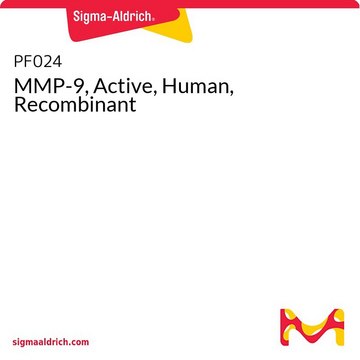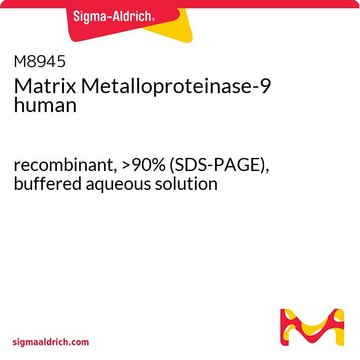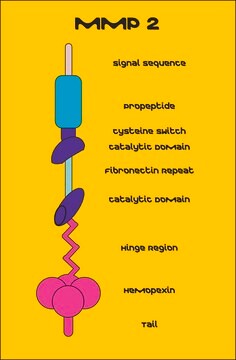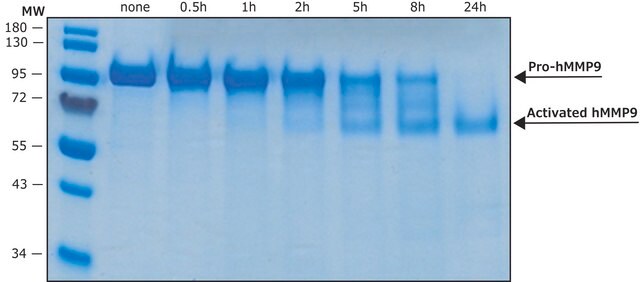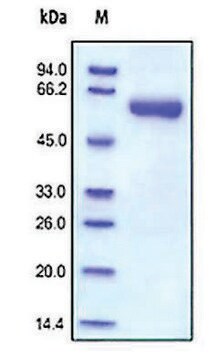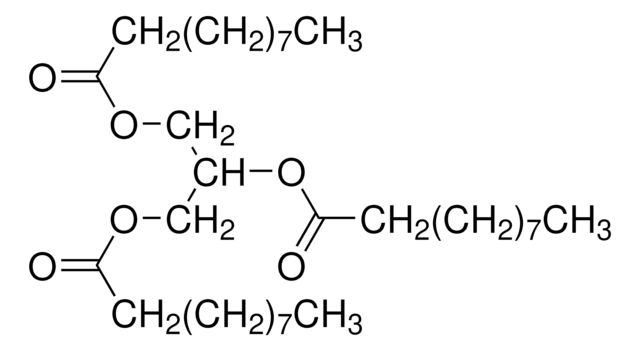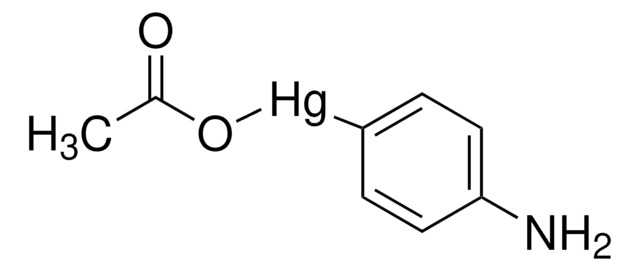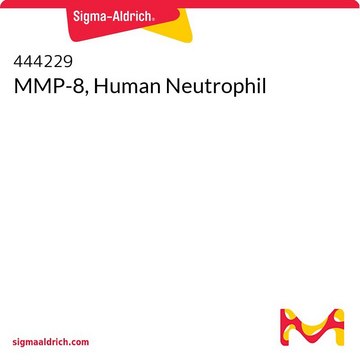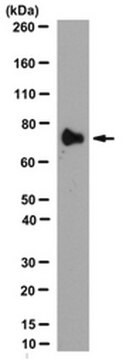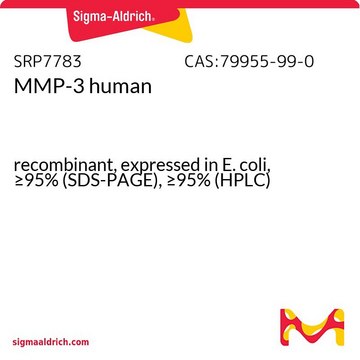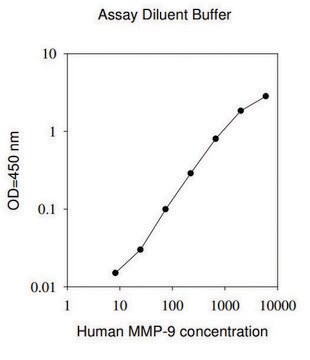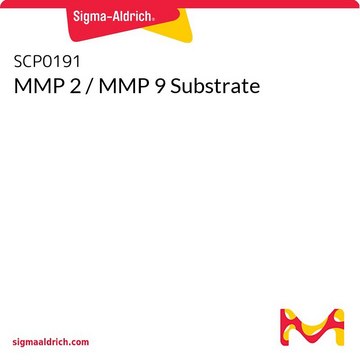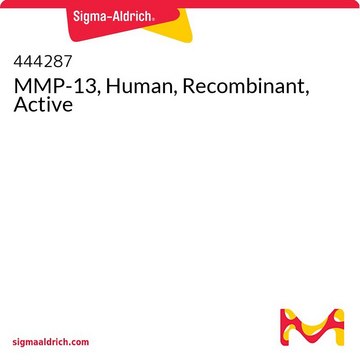SAE0078
MMP-9 pre-activated human
recombinant, ≥1,300 pmol/min/μg, expressed in HEK 293 cells
Sinonimo/i:
GELB, GELBCLG4B, Gelatinase, Gelatinase B, MANDP2, MMP-9, Matrix Metalloproteinase-10, Type IV collagenase
About This Item
Prodotti consigliati
Origine biologica
human
Livello qualitativo
Ricombinante
expressed in HEK 293 cells
Saggio
≥95% (SDS-PAGE)
Forma fisica
liquid
PM
calculated mol wt 66 kDa
observed mol wt 82 kDa by SDS-PAGE (The protein migrates as a 82 kDa protein on SDS-PAGE due to glycosylation)
Concentrazione
≥50 μg/mL
N° accesso UniProt
applicazioni
cell analysis
Condizioni di spedizione
dry ice
Temperatura di conservazione
−20°C
Informazioni sul gene
human ... MMP(4318)
Descrizione generale
Azioni biochim/fisiol
As with most MMPs, MMP-9 is secreted as an inactive pro-protein which is activated when cleaved by extracellular proteinases. MMP-9 can be cleaved (and thus activated) in vitro using 4-Aminophenylmercuric acetate (APMA), Cat. No. A9563. MMP-9 is secreted from neutrophils, macrophages, and a number of transformed cells, and is the most complex family member in terms of domain structure and regulation of its activity.
Structurally, MMP9 maybe be divided into five distinct domains: a pro-domain which is cleaved upon activation, a gelatin binding domain consisting of three contiguous fibronectin type II units, a catalytic domain containing the zinc binding site, a proline rich linker region, and a carboxyl terminal hemopexin like domain.
As with most MMPs, MMP-9 is secreted as an inactive pro-protein which is activated when cleaved by extracellular proteinases. This product was cleaved and activated in vitro using 4-Aminophenylmercuric acetate (APMA), Cat. No. A9563.
Altre note
Stato fisico
Codice della classe di stoccaggio
12 - Non Combustible Liquids
Classe di pericolosità dell'acqua (WGK)
WGK 3
Punto d’infiammabilità (°F)
Not applicable
Punto d’infiammabilità (°C)
Not applicable
Certificati d'analisi (COA)
Cerca il Certificati d'analisi (COA) digitando il numero di lotto/batch corrispondente. I numeri di lotto o di batch sono stampati sull'etichetta dei prodotti dopo la parola ‘Lotto’ o ‘Batch’.
Possiedi già questo prodotto?
I documenti relativi ai prodotti acquistati recentemente sono disponibili nell’Archivio dei documenti.
I clienti hanno visto anche
Il team dei nostri ricercatori vanta grande esperienza in tutte le aree della ricerca quali Life Science, scienza dei materiali, sintesi chimica, cromatografia, discipline analitiche, ecc..
Contatta l'Assistenza Tecnica.